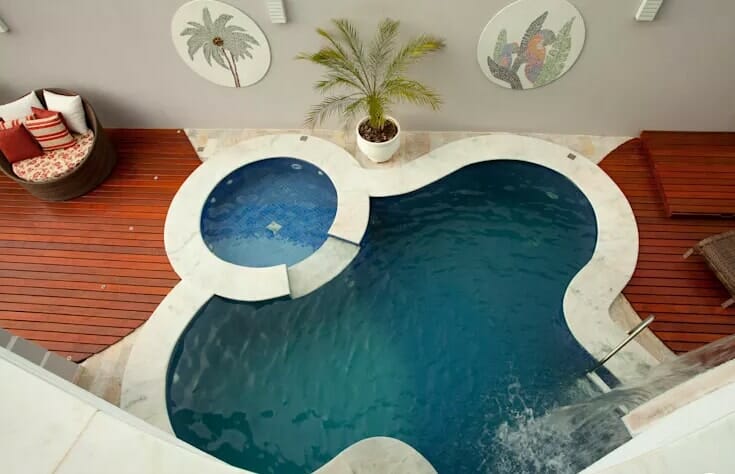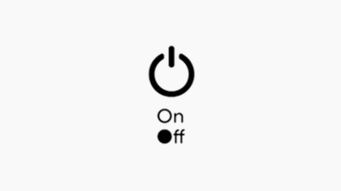
Basics of swimming pool water treatment
If you own a swimming pool or intend to own one, it is essential for the health of its visitors to know the basics of swimming pool water treatment. know the water circulation system; It is the internally connected system that circulates water from the pool until it returns to the pool, in other words, from the pool through a collection or storage tank, water circulation pump, filters (or filter), chemical treatment unit, water heaters (in the case of used), and then return to the pool.
Important terms
Water treatment
It is the process of filtering and sterilizing swimming pool water by the combined means of filtration units and the addition of chemicals to the water.
Cycle time
Represents the period of time (in hours) required to make the volume of water equal to the capacity of the pool
Regularity coefficient
It is the ratio between the theoretical size of the sieve (in millimeters) that passes 60% of the sand and the theoretical size of the sieve (in millimeters) that passes 10%.
Waterline
The water line must be known in one of the following ways:
(a) Skimming system: The water line must be in the middle of the scraper operating range.
(b) Overflow drainage system: The water line should be at the upper edge of the flood limit.
Basic units in swimming pool water treatment
Each swimming pool shall be equipped with a separate water circulation and treatment system, designed to continuously circulate, filter and sterilize the pool water.
The system consists of pumps, filters (or filters), chemical feeders, skimmers or surrounding systems for the discharge of excess water, all types of water valves, pipes, connections, fittings and accessories. The noise level generated by the system at any time must not exceed 45 (dBA).
The pump
The pump circulates the water through the filter (or filter) and the water heater to keep it clean and hot. The pool pump should be able to circulate the water at least once every two hours.
Filter
The filter cleans the water by removing solids, algae and dirt and must be able to keep the water clean. Generally, there are three types of filters: cartridge filters, diatomaceous earth filters, and sand filters.
Water heaters
Most water heaters run on fossil fuels (such as natural gas, propane or petroleum heating), electric fuels, or solar heating.
Chemical changes that require treatment of swimming pool water
These changes are very rapid, and the factors causing this are:
Water temperature, water aeration, chemical nature of the bodies of people who use the swimming pool, and the proportion (bodies/water) suspended in the swimming pool, high water temperature creates a good environment for the growth of algae and bacteria, and to maintain the purity and cleanliness of the swimming pool water, we need to check the quality of the water. It gives us the necessary information to keep the water clean and well-balanced. So as to measure:
- Sterile (chlorine/bromine) level.
- Acidic function level (pH).
- Total basal score.
- Water hardness due to calcium.
You can find out more about the lab tests we offer in Carwater here. The balance of these elements must be renewed in the swimming pool water / as the unbalanced water harms the eyes and leads to the erosion of the pond’s machinery and accessories and works to sediment the mud.
Sterilizers
Chlorine and bromine are one of the most common chemicals used in sterilizing ponds. Chlorine is in a liquid form, or in the form of plates or granules, while bromine is found in the form of bars, plates, or a two-stage dry chemical mixture, and both types of chemicals work to keep the water free of harmful bacteria. And prevents the growth of some algae, when given appropriate doses.
Water hardness due to calcium
Calcium is one of the clay minerals, which affects the overall balance of water, and its percentage in water should not exceed (150-300) parts per million. If the percentage of calcium in the water is very high, you may replace the old water with a new one, while if the percentage of calcium in the water is low, calcium chloride should be added to the water.
General requirements for a water recycling and treatment system
Clearwater
The water circulation and sterilization system must be operated and maintained to maintain the cleanliness and clarity of the pond water. Under any circumstances, the pond should not be used if the drain leakage from the surface is not clearly visible.
Quality of bacteria and chemicals for pond water
The bacterial quality of pond water should not be more than 200 bacteria per milliliter, and the most likely number (MPN) for total organism coliform should be 2 and 2 or greater per 100 mm of the water sample.
As for the quality of the chemicals in the pool water, it should not irritate the eyes and skin of the swimmers and not have unpleasant effects on the swimmers.
Swimming pool cleaner
One of the most important parts of the optional (non-mandatory) equipment is the planer. They scrape leaves and other contaminants from the surface of the water externally. And extract sweat and body oils from the water internally. Thus, the skimmer prevents clogging of the water outlet and pipes.
Some owners of swimming pools work to provide filters with a water sterilization system, and such a system keeps the water free of microorganisms by using sterilizing agents, such as ozone or ultraviolet rays, and both of these factors are among all the most useful purifying factors when added to chlorine or bromine treatment.
Water sterilization systems not only remove water waste, but also remove odors and may reduce the number of pesticides required for proper water treatment, and most experts advise swimming pool owners to use water sterilization systems in addition to using chemical sterilization periodically.
Chemical treatment of the water helps kill microorganisms in the pool water or before it is pumped through the sterilizer.
Cleaning and maintenance
All pool parts, accessories, and equipment must be well maintained. The floors must be free of cracks and any other defects. The total area of the swimming pool must be clean, sanitary, and free of litter and dirt. Experts recommend the following:
- Checking the water daily to find out the level of (pH), chlorine and bromine.
- Check the water monthly to see the level of total alkalinity and calcium.
- Use a tight-fitting lid to avoid heat loss.
- Clean the filter once a month.
- Check the leaf filter basket at least once every week to remove waste.
- Checking periodically for water leakage from pipe joints and plugs in the supporting equipment.
- Inspect heaters annually for mud deposits and corrosion.
Water loss in swimming pools
Large amounts of water are lost in swimming pools during the following operations:
- Fill the pool with water for the first time.
- Emptying the swimming pool and refilling it with water for maintenance and operation purposes.
- Internal infusion.
- Evaporation from the swimming pool “depends on the percentage of evaporation for each area and on the surface area of the swimming pool.”
- Evaporation from the swimming surface and walking paths is “approximately equal to evaporation from the swimming pool”.
- Losses due to evaporation and run-off from water spray “up to 25% of evaporation”.
- Evaporation losses from wet objects, water absorption by swimwear, water used to wash swimming pool equipment (skimmers and filter).
Important tips for maintaining a clean swimming pool
- The pH of the water should be checked daily.
- Know the chlorine content in your pool water, especially in heated pools. As heated pools need a higher percentage of chlorine than unheated and regular pools.
- The abrasive net should be used daily to clean the pool water and remove all dirt.
- The water filter must be checked and cleaned so that it does not accumulate dirt and dust and is able to remove dirt in the pool water. Be sure to operate the water filter daily in order to remove deposits from the bottom of the pool and ensure that the water is clean.
- It is necessary to ensure the percentage of chlorine contained in the pool water.
- The water pump, as well as the equipment, should be checked periodically and regularly.
- If the pool has a filter, all parts of the pool must be washed using water pressure.
- Wash and clean the sand filter from the back.
- If the house is left for more than 24 hours, the pool is completely emptied of water, and after return, it is cleaned thoroughly before filling it with water again.
- Damaged parts must be repaired or replaced as soon as possible through maintenance companies specialized in the field of swimming pool maintenance, as they have original spare parts.
Things if you find in the swimming pool, it is known that the pool needs immediate cleaning and maintenance
If you find these signs in the pool, you must stop using the pool immediately and clean the pool maintenance:
- The color of the water has an unusual change.
- When you notice the presence of algae or dirt on the surface of the pool.
- The presence of dirt or plankton at the bottom of the pool.
- When you notice an unpleasant smell in the pool water.
- Broken, cracked, or leaked pool ceramics.
- The presence of foam on the surface of the pool water, indicates an imbalance in the amount of calcium in the water.
And in the end… it must be known that cleaning and maintenance of swimming pools is one of the important and basic daily matters that must be focused on and not neglected so that swimming pool users are not exposed to harm, whether it is an adult or children.
























